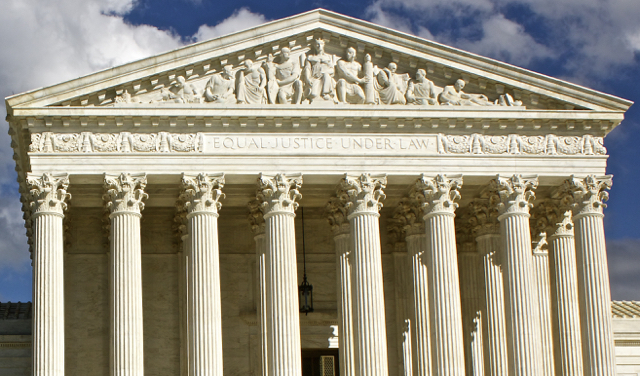Today marks the 25th anniversary of the Supreme Court’s decision in Planned Parenthood v. Casey. This case involved the constitutionality of several provisions in Pennsylvania’s Abortion Control Act and marked the only time that the Supreme Court formally reconsidered its holdings in Roe v. Wade. When the Supreme Court failed to reverse Roe in this case, it was a substantial setback for the pro-life movement. Still, the 25 years since Casey have been a story of substantial legislative, political, and legal progress for pro-lifers — progress that has occurred not only because of perseverance but also because the movement shrewdly used legal openings granted to them by the Casey decision.
The pro-life movement has devoted few resources to chronicling its own history, so not many people remember how much pro-lifers had invested in the Casey decision. During the early 1980s, pro-life political strategy shifted from enacting a constitutional amendment to changing the composition of the Supreme Court. At this time, a more conservative Supreme Court seemed almost inevitable, considering that Presidents Ronald Reagan and George H. W. Bush appointed a total of five new justices. As a result, a reversal of Roe v. Wade appeared not only plausible but even likely. That made the Supreme Court’s Casey decision particularly disappointing.
Even worse, in the early 1990s, pro-lifers were losing ground in the court of public opinion. Gallup surveys found that the percentage of people who felt that abortion should be “legal under any circumstances” had steadily increased since the 1970s. A 1995 Gallup survey found that only 33 percent of Americans identified as “pro-life.” Not even demographics appeared to offer much hope. Americans were becoming wealthier and better educated, both of which tended to correlate with “pro-choice” sentiment. All in all, there were good reasons to question the long-term political viability of the pro-life movement.
But the Casey decision contained a silver lining. Even though the Supreme Court did not overturn Roe v. Wade in Casey, it abandoned the trimester framework invented in Roe and instead adopted a doctrine of “undue burden.” This allowed for state regulation of abortion, as long as the regulation did not impose an “undue burden” on women seeking abortions. Under this new standard, the Casey decision upheld most of the provisions included in Pennsylvania’s Abortion Control Act, including the parental-consent provision, the reporting requirements, the waiting period, and the informed-consent language. Only the spousal-notification requirement was struck down.
Keep up with the latest pro-life news and information on Twitter. Follow @LifeNewsHQ
The incremental strategy has paid dividends. Research shows that public-funding restrictions, parental-involvement laws, and informed-consent laws all reduce abortion rates.
This incremental strategy has paid a variety of dividends. A growing body of peer-reviewed research shows that public-funding restrictions, parental-involvement laws, and properly designed informed-consent laws all reduce abortion rates. Furthermore, the ongoing debates about these incremental laws — many of which enjoy broad public support — have succeeded in reframing the abortion debate in terms more favorable for pro-lifers. Indeed, many of the most worrisome trends of the early 1990s have reversed themselves. It is now Democrats who appear more conflicted over their party’s platform on abortion. The pro-choice Republican governors who were once thought to be the future of the party have largely vanished from the political scene.
Additionally, the pro-life position has been gaining public support. Seventeen of 18 Gallup polls from 1995 to 2008 showed a pro-choice plurality. But Gallup polls from both 2009 and 2012 found that a majority of Americans described themselves as “pro-life.” And those numbers are likely to grow even more in the future . During the 1970s and 1980s, many surveys showed that young adults were likely to favor abortion; since 2000, however, the General Social Survey (GSS) found that young adults are the age demographic most likely to oppose legal abortion.
Most important, the number of abortions is steadily declining. Since 1990, the number of abortions performed in the United States annually has declined by about 42 percent. The latest reported abortion rate from 2014 is half of what it was in 1980 and is even lower than it was in 1974, the year after the Roe v. Wade decision. Interestingly, the unintended-pregnancy rate has remained fairly constant over the long term. The decline in abortions is driven by the fact that a higher percentage of women facing unintended pregnancies are carrying those pregnancies to term. Clearly, pro-life legislative and educational efforts have succeeded in changing hearts and minds.
At some point, the Supreme Court will reconsider its holdings in both Roe and Casey. Predicting judicial rulings is far from an exact science. The Supreme Court may well decide to overturn Roe v. Wade. However, even if Roe is upheld, there is a good chance the Court will continue to allow for greater state-level regulation of abortion. It will be up to the next generation of activists to effectively use future legal openings to advance the culture of life.
LifeNews.com Note: Dr. Michael New is a professor at Ave Maria University. He is a former political science professor at the University of Michigan–Dearborn and holds a Ph.D. from Stanford University. He is a fellow at Witherspoon Institute in Princeton, New Jersey.








